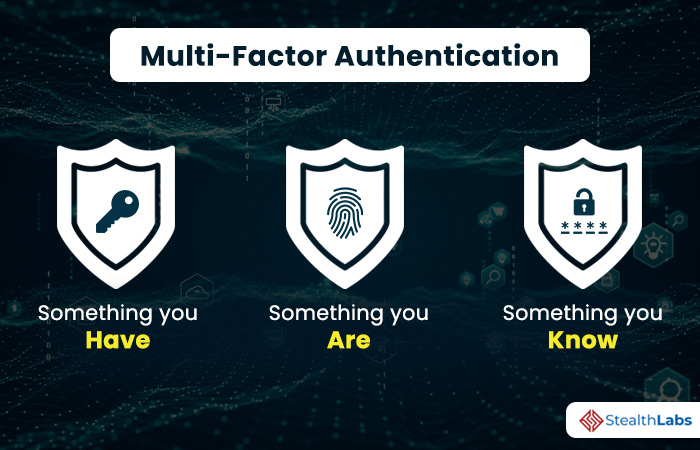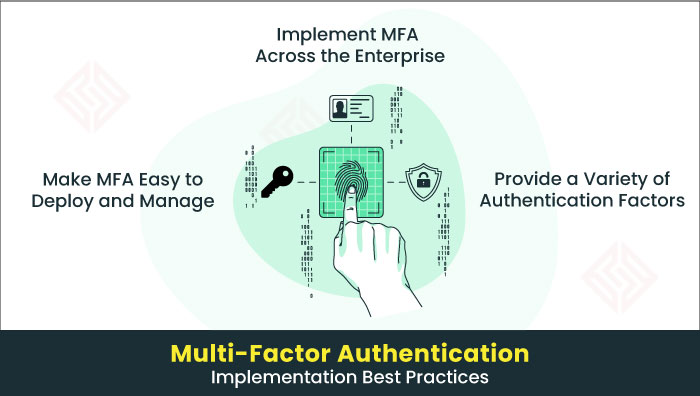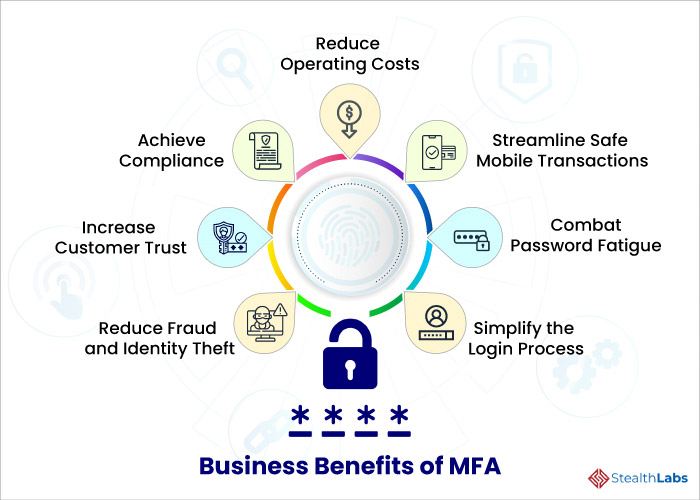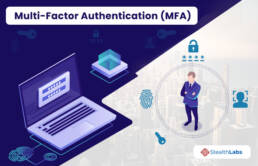Multi-Factor Authentication (MFA): Implementation, Best Practices and Benefits
Aside from being a trying time on its own, the pandemic period of 2020 also saw a massive uptick in cybercrime. With remote work and anywhere operations likely to stay in vogue for the foreseeable future, the attacks are expected to increase in both strength and ingenuity as new areas of vulnerabilities emerge and are exploited.
However, recent data indicate that poor credential security remains one of the top causes of security breaches with 81% of data breaches resulting from weak or stolen passwords.
At the RSA Security Conference, Microsoft’s director of identity security, Alex Weinert revealed that nearly 1.2 million Microsoft accounts were breached in January 2020. The striking find, however, was that 99.9% of the breached accounts were not using Multi-Factor Authentication (MFA).
Continuing that vein, compromised credentials pose a very real threat to the security and integrity of your business and sensitive data.
According to Forrester data, 70% of companies continue to be password-centric, i.e., reliant on a single factor of authentication.
Unfortunately, 61% of people have the habit of reusing the same or similar password on different accounts. For businesses that have tried the more traditional two-factor authentication (2FA) route, the user experience and adoption rates remain a mixed bag with complexities around the expense and the usage of hard-tokens.

The need of the moment is for a more secure, user-friendly, and economical model for authentication.
Securing your business data and your customer’s sensitive information needs to become a priority in an environment where cyber-attacks are no longer a probability, but a very real everyday occurrence.
Setting up a multifactor authentication system can help float a critical overlay of security around your network. StealthLabs can be a great resource to get started on deploying MFA for your business.
Multi-Factor Authentication (MFA) Implementation Best Practices
Deploying MFA across your enterprise may seem daunting but following the best practices approach can make the experience considerably simpler.

- Make MFA easy to deploy and manage – The way to make the practice of MFA sustainable at your organization is to make it easy for your IT team to deploy and manage. You should ideally look for solutions that will let you deploy MFA easily across all users without any additional hardware or software. You should choose an MFA solution that gels well with your existing infrastructure, without the need to ‘activate’ it individually on every working system. Most importantly, the MFA solution must have a unified dashboard for administrators to quickly assess user queries and respond to problems if any.
- Implement MFA Across the Enterprise – The MFA solution you opt for needs to be scalable so it can be deployed across your enterprise and grow as your business does. Deploying MFA in silos is an exercise in futility and you should take care to ensure that your access points are covered under MFA. This also includes all workloads in the cloud. Your security practices need to be consistent across the organization with special care devoted to MFA for remote network access for distributed employees and business partners in today’s work environment. Your MFA deployment should ideally cover all end users (including privileged users), cloud and on-premises applications, VPN, server logins and privilege elevation.
- Provide a Variety of Authentication Factors – User experience is central to the success of your MFA deployment, so user convenience should remain at the forefront even as MFA helps your organization with security. The user experience of MFA can benefit from having a range of authentication methods available for users to choose from. These can include a combination of biometrics, such as fingerprint, retina scans, and facial recognition, or other options, such as hardware tokens, SMS/Text message, call/ email verification, security questions, soft tokens, etc.
Business Benefits of Multi-Factor Authentication (MFA)
The benefits of MFA should not be arcane knowledge limited only to your IT department. While it is common knowledge that using MFA can protect against unauthorized access, data breaches, and password-based cyber-attacks, the benefits of MFA go far beyond security and these are implications that must be made clear to senior management as well as individual employees.

Without the blessing and participation of your end-users, your MFA rollout may not have the effect you desire. For effective deployment and management of your MFA solution, consider reaching out to a cybersecurity solutions provider.
- Better security means keeping trust with your customers and supply chains – Security is starting to play a big role in how a company is perceived by others in the industry and more importantly, your customers. It could very well be a deciding factor in their decision to do business with your organization or your competitor. Underlining your seriousness about security, such as enabling Zero Trust Security, can clinch the deal when it comes to customer perception.
- Reduce Operating Costs – Just tally up how much it costs you every time you have to notify customers of suspicious activity on their accounts. MFA reduces the risk of fraud, thereby requiring less help desk efforts and leaving your service staff free to focus on more technical or business problems. While deploying MFA may need upfront investment, this cost will pay itself many times over in the long run.
- Put a check on fraud and identity theft – Password hacking is easy for cybercriminals, but MFA makes the job much harder by requiring more than two methods of identity verification. This automatically leads to a significant reduction in the number of frauds and identity theft companies experience on a regular basis, thanks to additional security measures and information that are not easily available to malicious actors.
- Better security can help you remain competitive – According to a recent Google survey, even basic two-factor authentication is powerful enough to stop 100% of automated attacks, 96% of bulk phishing attacks, and three-quarters of targeted attacks. Most businesses are very adept at adapting to new technologies for better business/ productivity outcomes, but this is rarely the case when it comes to improving their overall security posture.
By being nimble in adopting and deploying efficient security measures like MFA, you can help your business stay agile and competitive in a tight market. After all, it is high time that security was viewed as an enabler of business, rather than just an added cost and responsibility.
Post Courtesy: Sam Goh
More Articles:

